We can start with a showcase of excellence such as the Museo del Design Italiano, which for the centenary of Triennale Milano presents a new selection of objects in a new exhibit set-up created by Paolo Giacomazzi Design Studio. The pathway starts with the founding of the institution in 1923, and continues to the present. “The objects on view narrate the history of almost 100 years of radical experimentation, in which new materials, new techniques and new aesthetic codes have revolutionized the domestic sphere and the society, with a focus on the remarkable research that has transformed the identity and the main characteristics of Italian design,” says Marco Sammicheli, director of the museum.
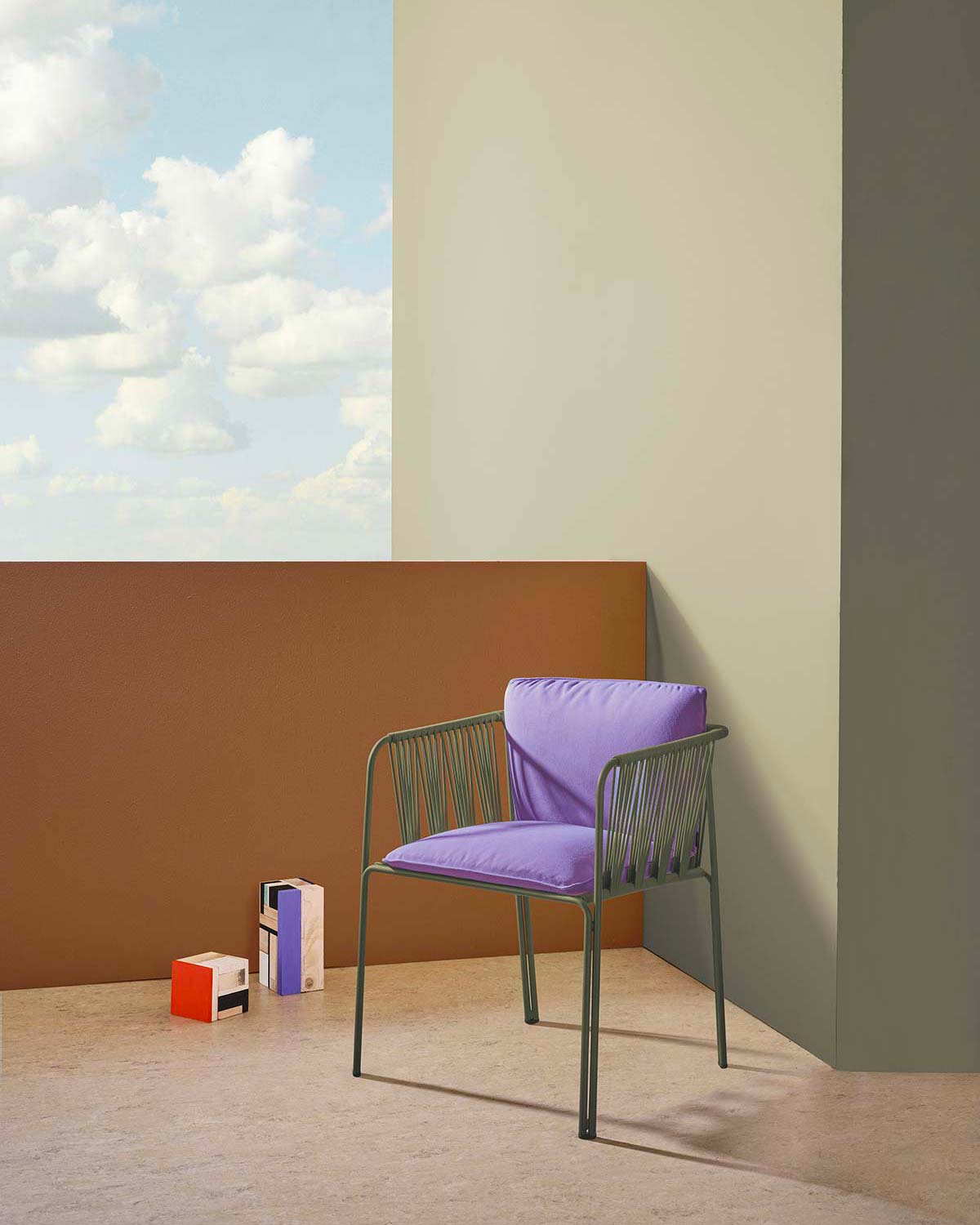
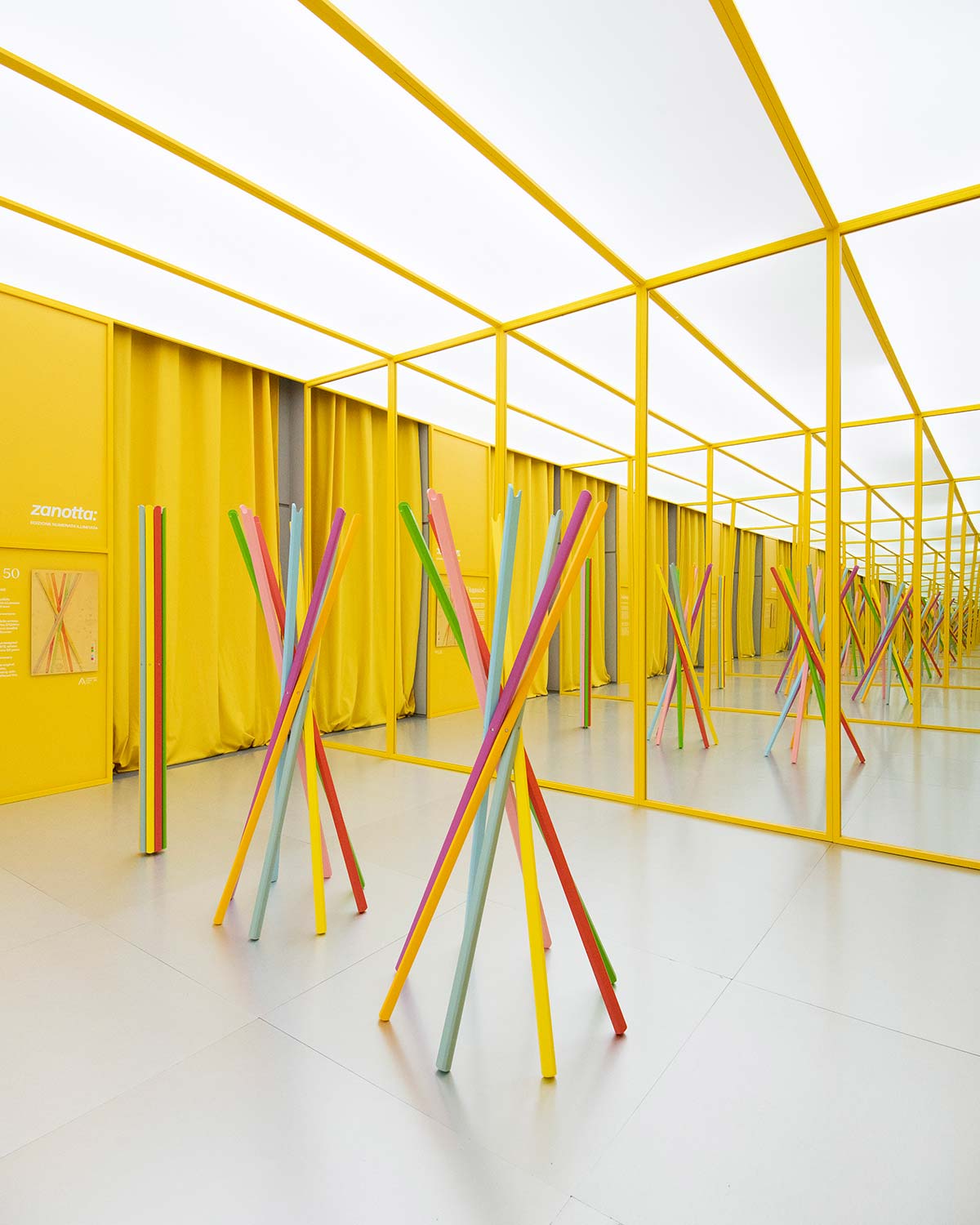
We then continue with a series of anniversaries, such as that of Pedrali which celebrates the 60th birthday of the company founded by Mario Pedrali. For the occasion, the designer Andrea Pedrali pays tribute to his grandfather with the Narì chair, which reprises certain elements of the first garden chairs produced in wrought iron, included in the collection in the 1960s. Narì is an outdoor chair that stands out for its solid steel structure and a weave made of extruded PVC with a nylon core. The application of the cords, carried out in Italy by expert artisans, narrows at the lower part of the seat and widens towards the top, suggesting fan-shaped geometry inspired by the back of the Serenella chair.
Sciangai – the iconic folding coat rack designed in 1973 by De Pas D’Urbino Lomazzi, winner of the Compasso d’Oro in 1979 – has reached its 50th year. Zanotta and Paolo Lomazzi celebrate this important anniversary by creating a special numbered limited edition: the very colorful Sciangai 50. In Sciangai, every part is a resting point on the ground, and at the same time a hanger for coats and hats at its upper extremity, shaped to accommodate all kinds of garments. The 8 solid beech staves are connected at a joint just above center, and can be opened to create an adjustable circumference based on the available space, for a wider or narrower presence.
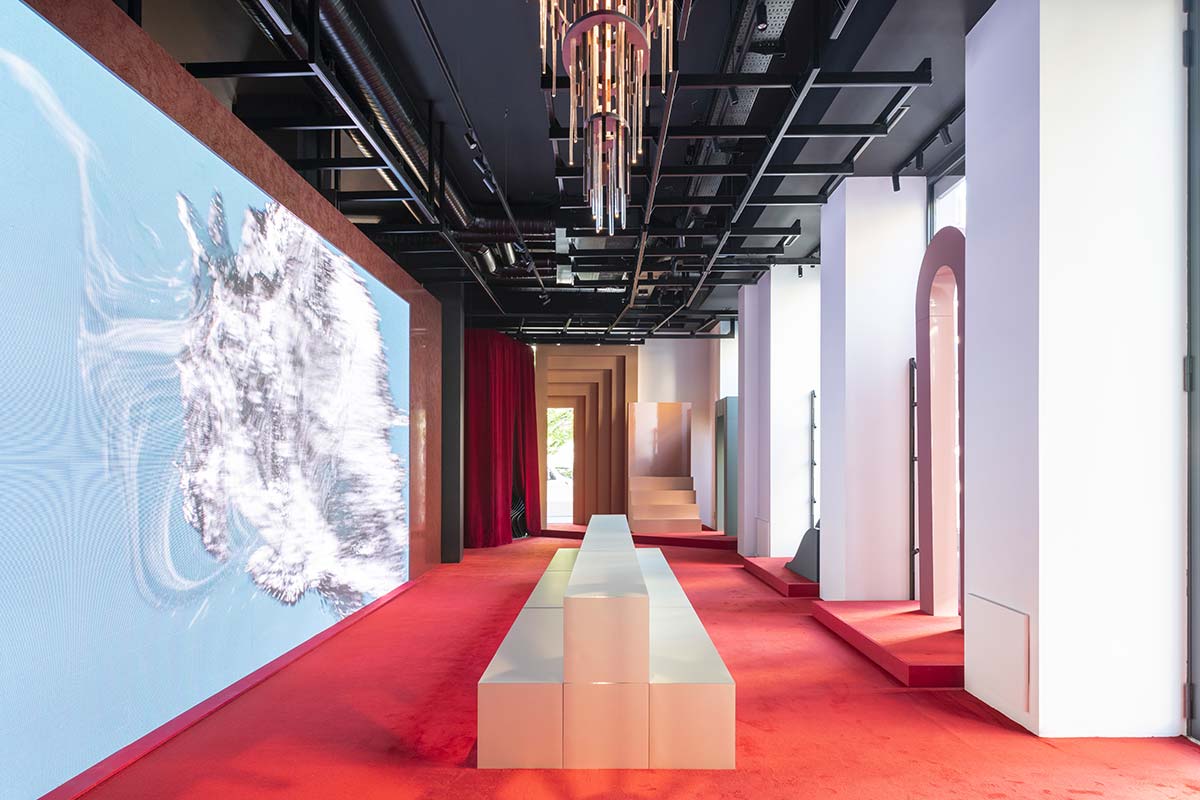
FENIX® and Formica® celebrate two important anniversaries, respectively the 10th and the 110th, joining forces in an impressive project of interaction and inclusion. Created by Zanellato/Bortotto and Musa, “Surfaces with a View – Unconventional Stories of Matter” is a tribute to a long Milanese tradition connected with theater and music, reinterpreted inside FENIX Scenario in a space that combines retail activity, art and entertainment. The project is part of a one-year collaboration with the Italian studio, covering various exhibitions and brand events for 2023.
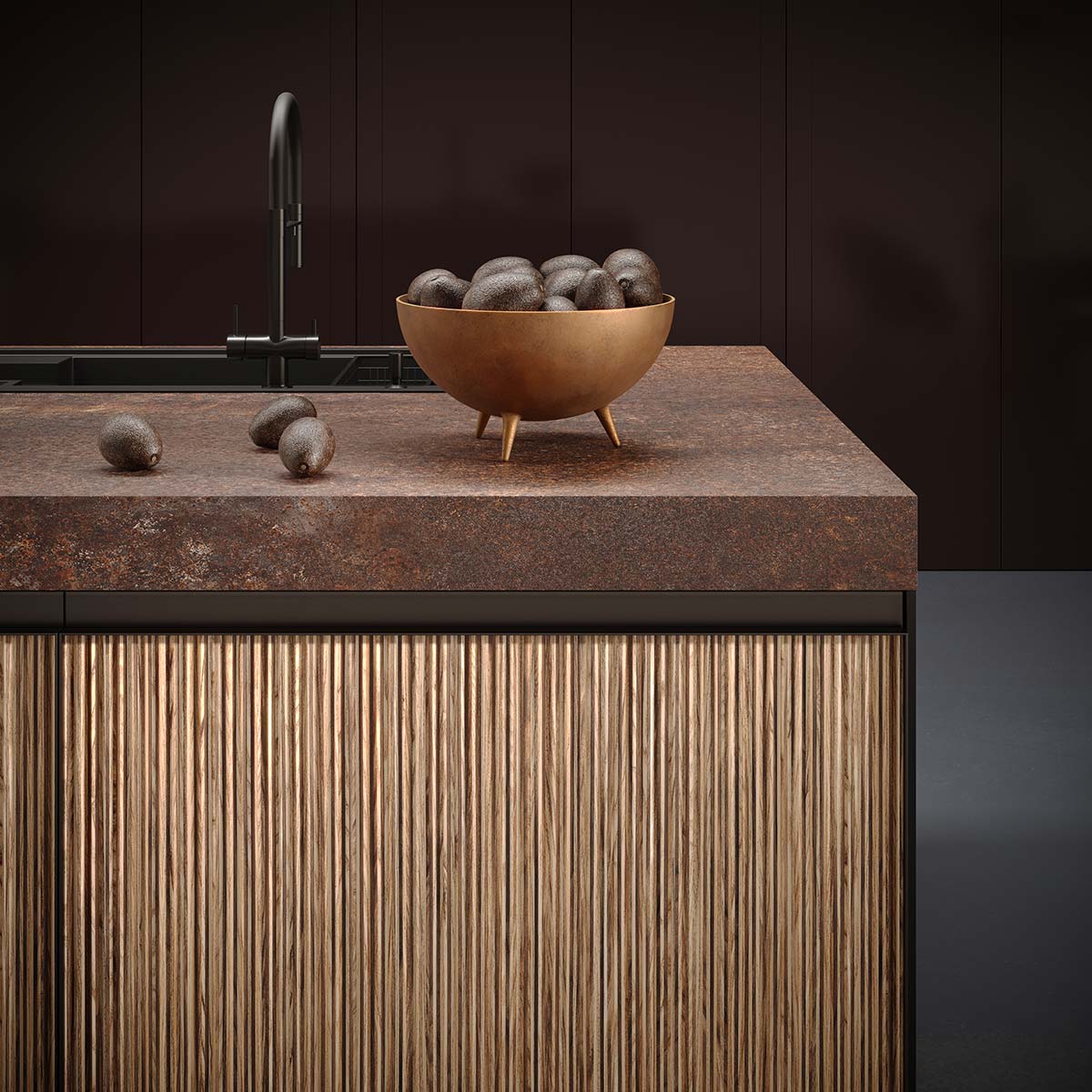
Among the latest developments, Tuet is the new Deep Surface by Arpa Industriale inspired by the canes of marshes in Piedmont, growing along the Tanaro River. The reliefs generate a soft, undulating tactile experience, bringing the intensity of chiaroscuro into spaces. Tuet is available in combination with two new patterns, one in pale wood, the other in dark wood.
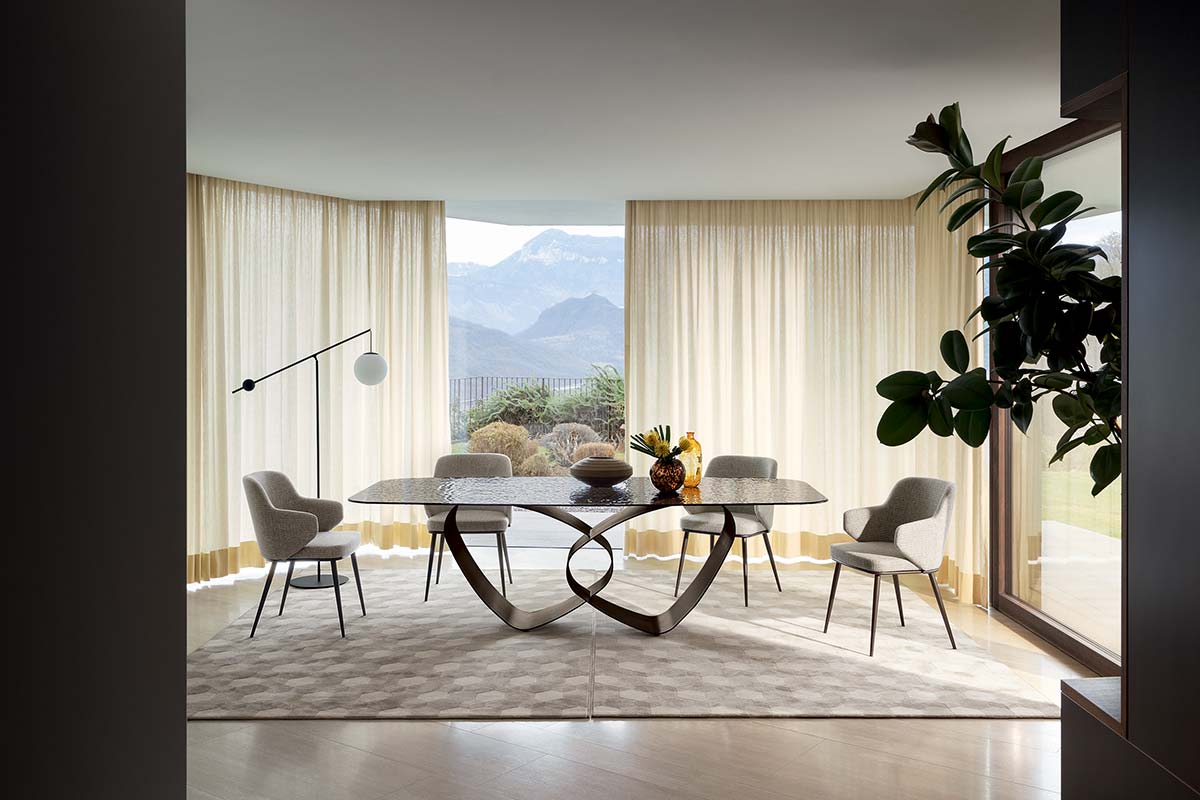
This year Calligaris celebrates its 100th anniversary, creating the Breeze table for the occasion, with a true game of geometry at the base of the structure. The monochrome surface changes its tone with variations of the lighting, thanks to the use of annealed glass. With this unusual form, the brand pays tribute to its anniversary logo, the focal point for all the celebrations that will continue throughout the year.
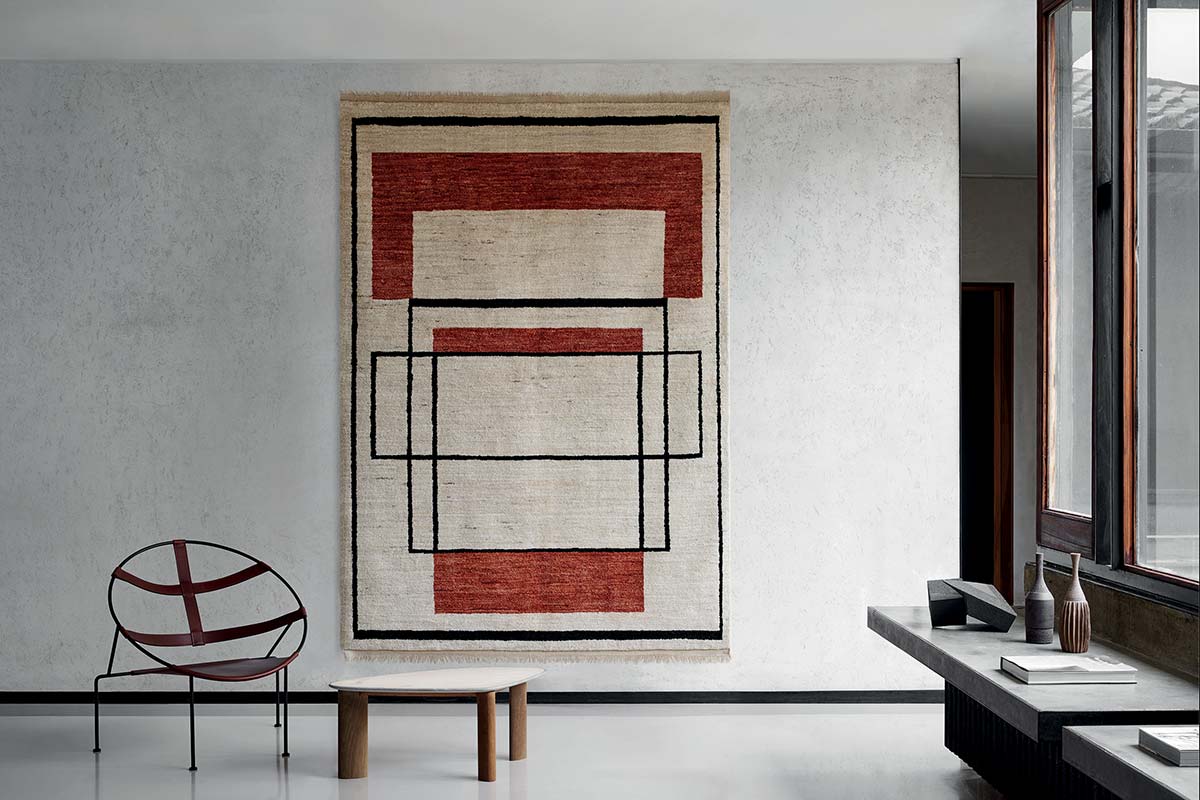
Amini Brothers Company recently turned 60. An installation at Villa Erba – curated by Elisa Ossino Studio – retraces the history of the company. In the collections, Collectives by Carlotta Fortuna reinterprets the Afghan rug in a special series of one-offs. Each of these hand-knotted carpets represents the excellence of traditional Afghan weaving techniques translated into contemporary designs, splendidly crafted by Afghani artisans.
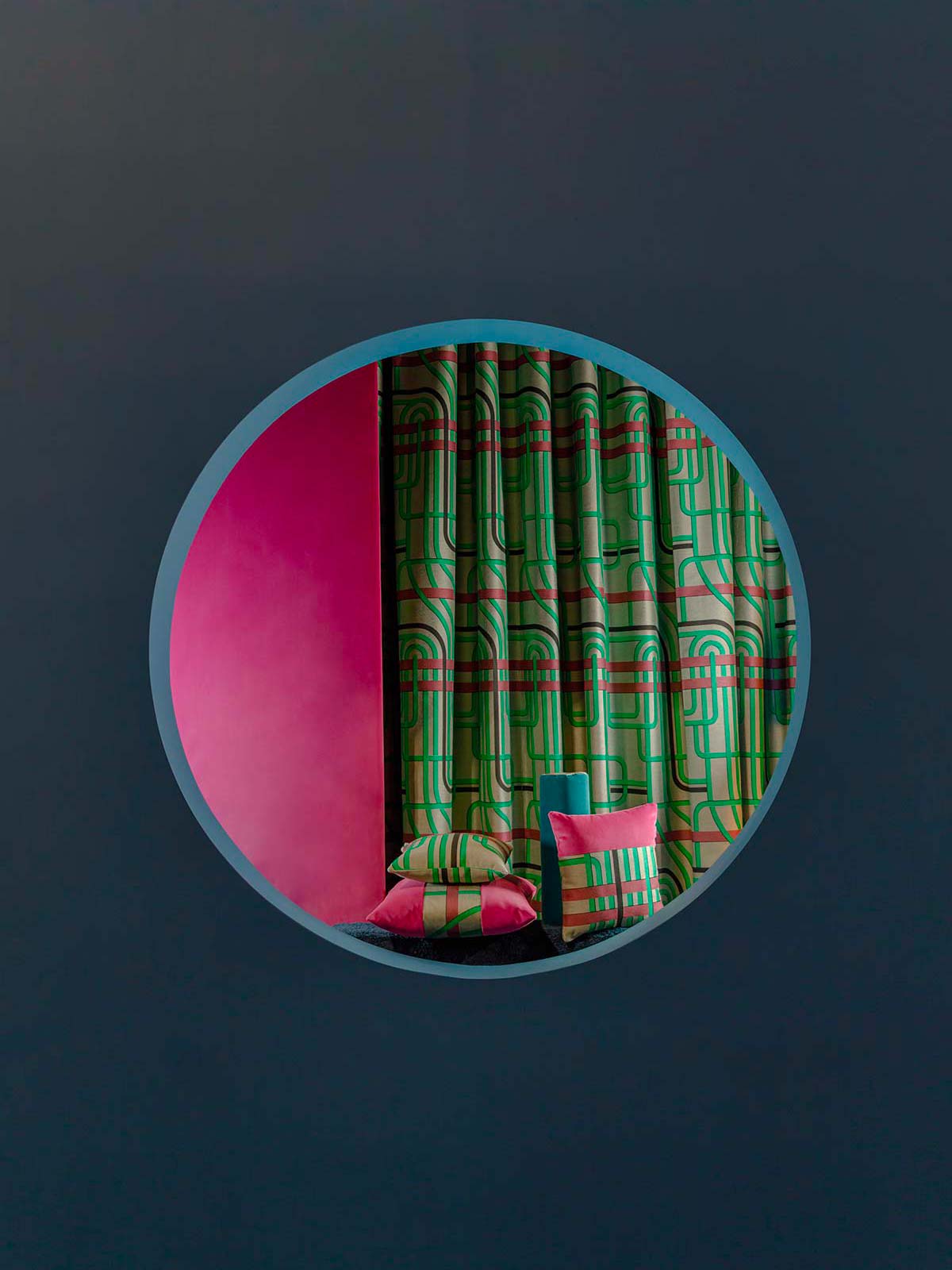
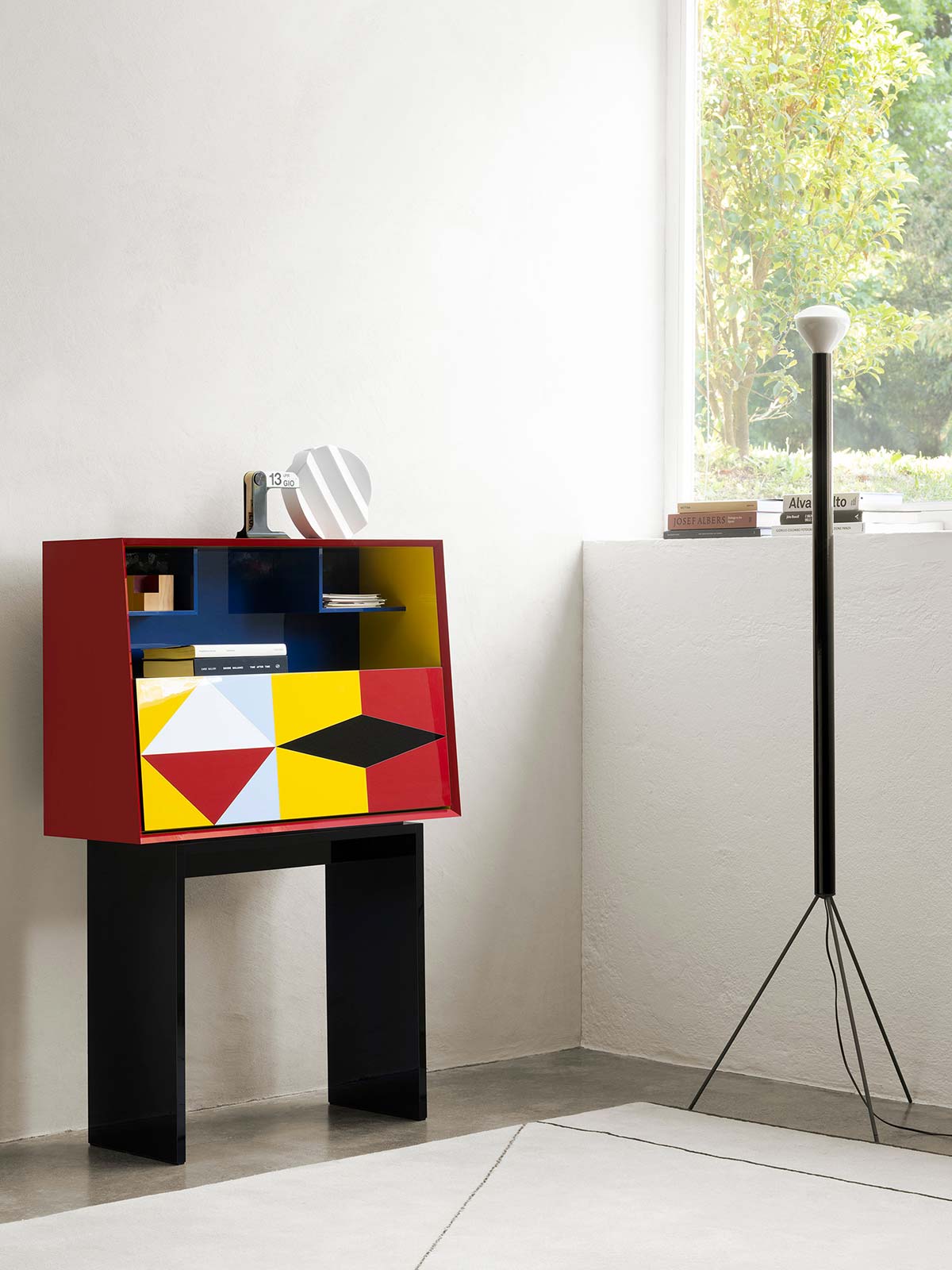
L’Opificio celebrates its 25th anniversary this year, presenting Les Intrigues, a new collection designed by Bruno Tarsia. The designs intersect and connect in a rhythmical weave of metaphor, much like what happens to the threads during the production of the fabric. The detailed relief composition also contributes to a sensation of precious brightness, while the mixture of colors, taking its cue from the schemes of the 1970s, pairs neutral and exuberant hues, giving rise to a fluid, delicate geometric effect.
In the area of reissues, Porro presents the Linea cabinets designed by Alessandro Mendini in 2015 and produced this year. Careful study of the archives of Alessandro Mendini, conducted together with Fulvia and Elisa Mendini, has brought three cabinets to light. The sideboard with an open compartment and a drawer, the closed cupboard with two hinged doors, and a desk (in the photo) with foldback top and internal partitions, raised on a dark base, all share full portions with geometric optical motifs, juxtaposed with colorful open zones.
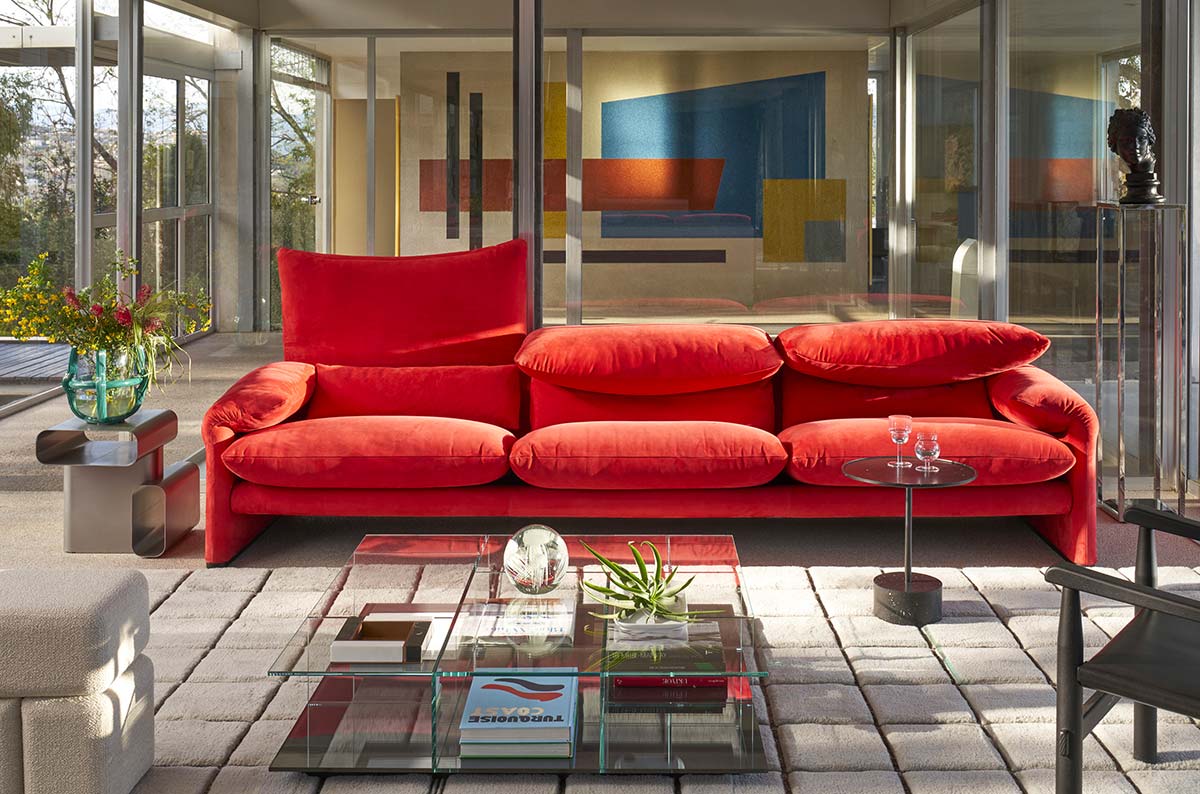
Cassina celebrates the entry of Vico Magistretti in the Cassina iMaestri collection with Maralunga 50, an exclusive edition that reaches its 50th anniversary this year. The new version of the chair and sofa, for two or three seats, comes in a particular shade of red, one of the designer’s favorite hues. Frame by stitching to highlight the borders, the ample volumes of Maralunga 50 are covered in nabuk, an elegant soft leather, which accentuates comfort while bringing out the timeless beauty of the design.
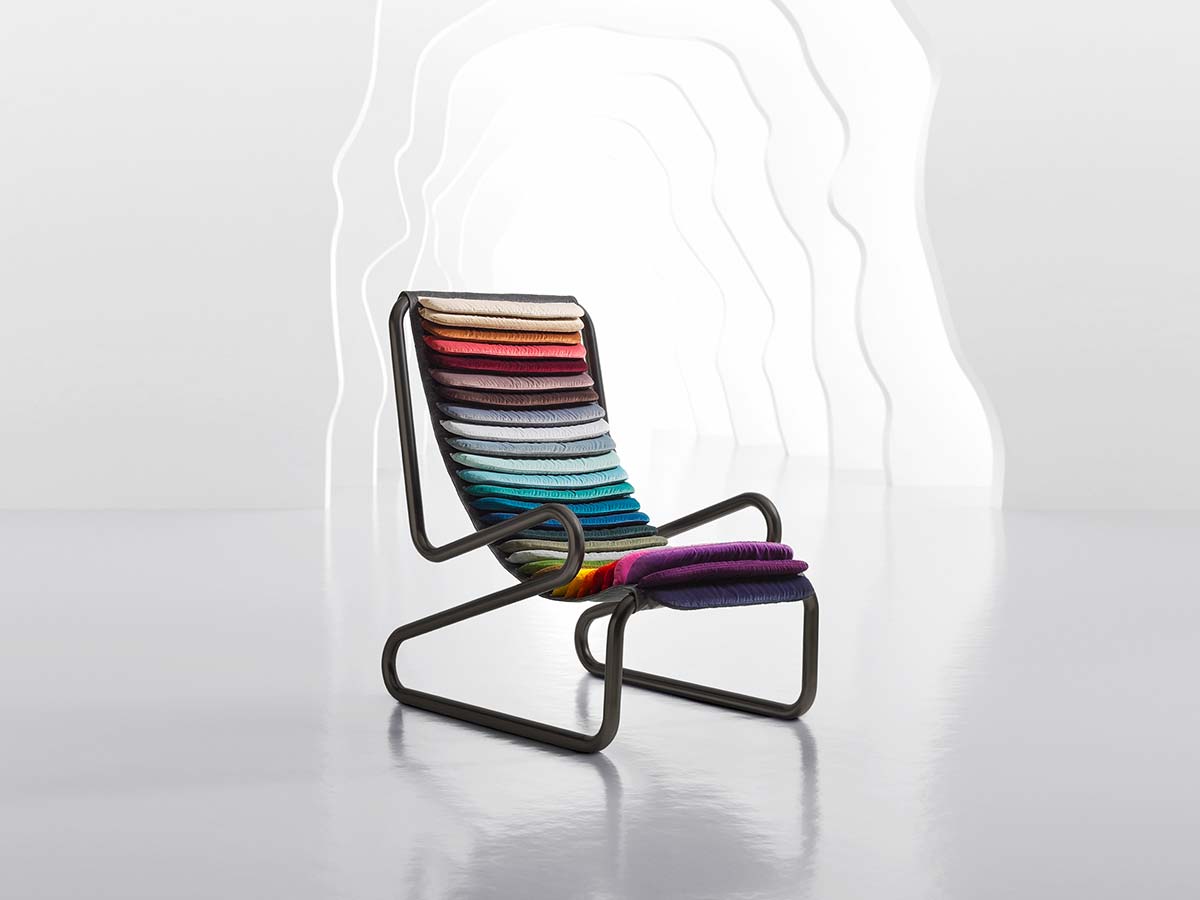
One of the most iconic creations of Busnelli, the Armadillo chair designed in 1969 by Gianni Pareschi gets a new guise. The new Caleidoscopic version has tubing in the Ombra color and multicolored covering to underscore the chair’s iconic status. The main feature of this piece is its tubular curved metal structure, covered by soft cushions made by hand to form the elegant profile.
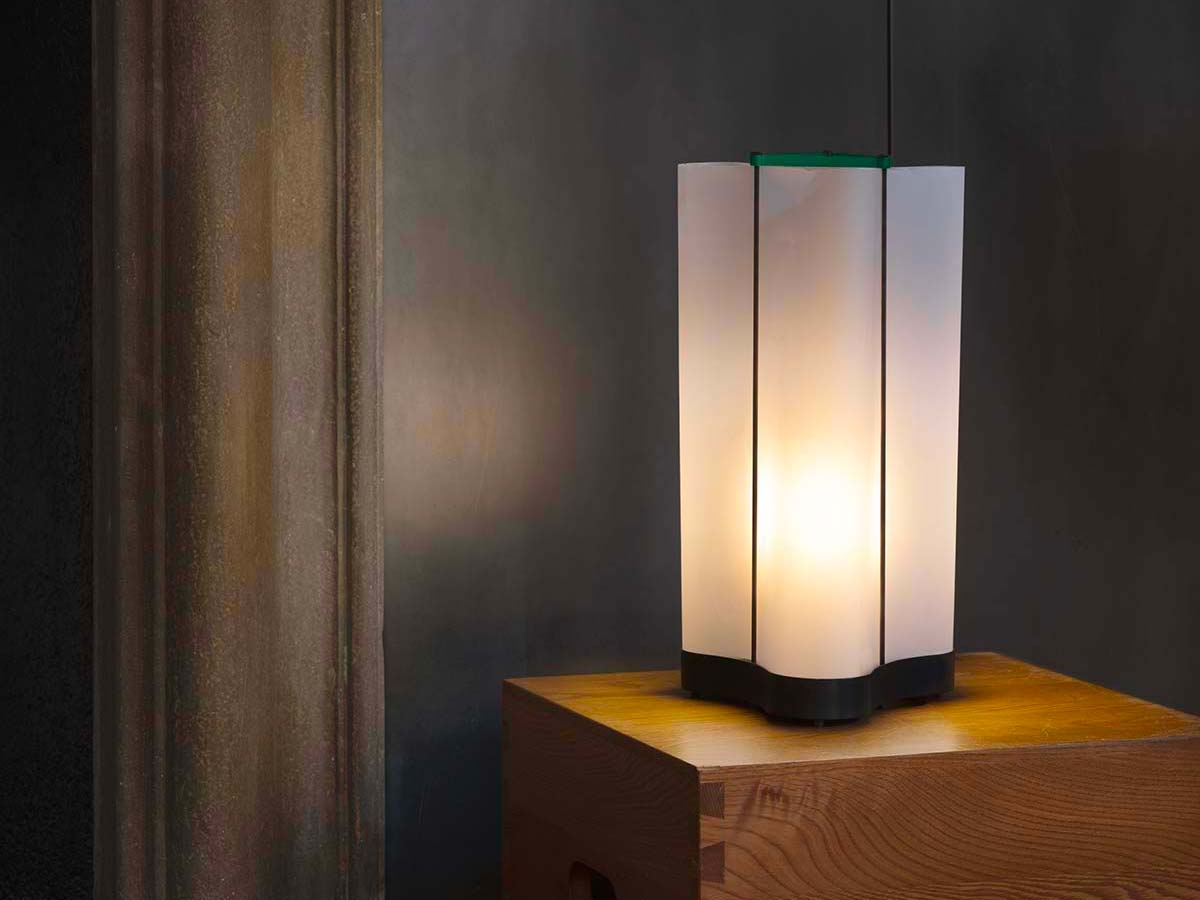
Nemo Lighting presents a project by Le Corbusier never produced before: the Cabanon lamp. In 1952, on the French Riviera, Le Corbusier built the ‘Cabanon,’ a small cabin based on the rules of the Modulor, not far from the sea. The lamp designed for this microcosm is composed from the base of a shade made in the tracing paper utilized in the architect’s work.







